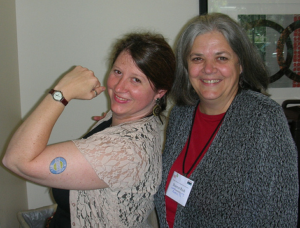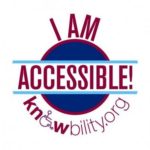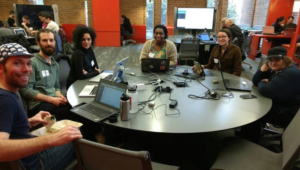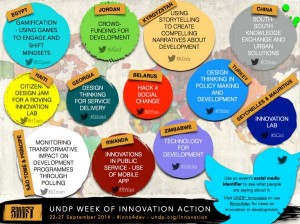Saturday night, during the One America Appeal concert, after the speeches by the USA Presidents in attendance, a representative from the Points of Light Foundation took the stage to honor volunteers who have made significant contributions to helping in post-hurricane efforts in Texas, Florida, Puerto Rico and the Virgin Islands. I was floored and thrilled to hear virtual volunteering referenced!
Among the volunteers honored was Leah Halbina of Florida, who joined the efforts of Sketch City, a nonprofit community based in Houston. Together with other online volunteers, they helped victims locate their nearest shelter and satisfy other pressing needs in Texas. Leah helped Sketch City’s initiative harveyneeds.org by calling shelters and asking about their capacity. Shortly after, Leah had to use the technology and information-gathering in her home state of Florida as Hurricane Irma approached and made landfall. Leah and other online volunteers created irmaresponse.org, a website providing victims with information on shelter locations and capacity, and providing donors with information on the needs of each shelter. Chatbots (via text and Facebook messenger) were used to help evacuees locate shelters, and were equipped to speak both English and Spanish, while the website was offered in English, Spanish and Creole to accommodate as many residents as possible. “For Irma Response, I took on a lot of the same responsibilities as Harvey Needs: Setting up our Facebook page, Twitter handle, website, and helping route new volunteers to help them find their place and a project they wanted to contribute to. With a lot of help from others in the group, I also managed our social media to spread the word about the available tools and resources.” Other groups that contributed volunteers were based all over Texas and Florida, as well as in Atlanta, Georgia, Oklahoma, San Jose, Greensboro, Washington, D.C. and Louisville, Kentucky.
More than 20 years ago, back in the late 1990s, I presented at a Points of Light Foundation / Corporation for National Service national conference, introducing the idea of virtual volunteering to attendees. The next year, I contacted POL and asked if I would be presenting again. They said no – a presentation had been done by me last year, there’s no need for another! Sigh… I would submit information they could include on their web site about virtual volunteering, they would politely decline…. I am so thankful that times have changed.
Also honored by the foundation as a “point of light” was Ronnie Devries. With experience as the volunteer coordinator for TXRX Labs, a Houston nonprofit hackerspace, Ronnie helped create a makeshift command center at Houston’s George R. Brown Convention Center, which became a shelter for thousands of residents displaced by the storm. Working overnight, he helped set up a system for volunteer coordination to ensure volunteers were matched with all aspects of shelter operations. After the volunteer coordination was handed off to Volunteer Houston, he created harveyseminars.org and conducted free seminars/workshops around information for people affected by the storm, or for people who wanted to help others. I love that someone who engaged in volunteer coordination and management was honored. The importance of quality volunteer coordination is too often overlooked!
And another thing I loved about these honors: they aren’t about how many hours the volunteers have given, or about the dollar value of those volunteers. The honors are about how volunteering worth honoring is transformative, not about the number of hours.
Also see:





 Back in September 2014, I starting whining about the lack of anything sustainable coming from most of the hackathons / hacks4good / apps4good I was seeing popping up all over in support of nonprofit organizations, government initiatives and various communities, in the USA and abroad. My whining culminated in this blog,
Back in September 2014, I starting whining about the lack of anything sustainable coming from most of the hackathons / hacks4good / apps4good I was seeing popping up all over in support of nonprofit organizations, government initiatives and various communities, in the USA and abroad. My whining culminated in this blog, 
 In a conversation with a friend participating in
In a conversation with a friend participating in